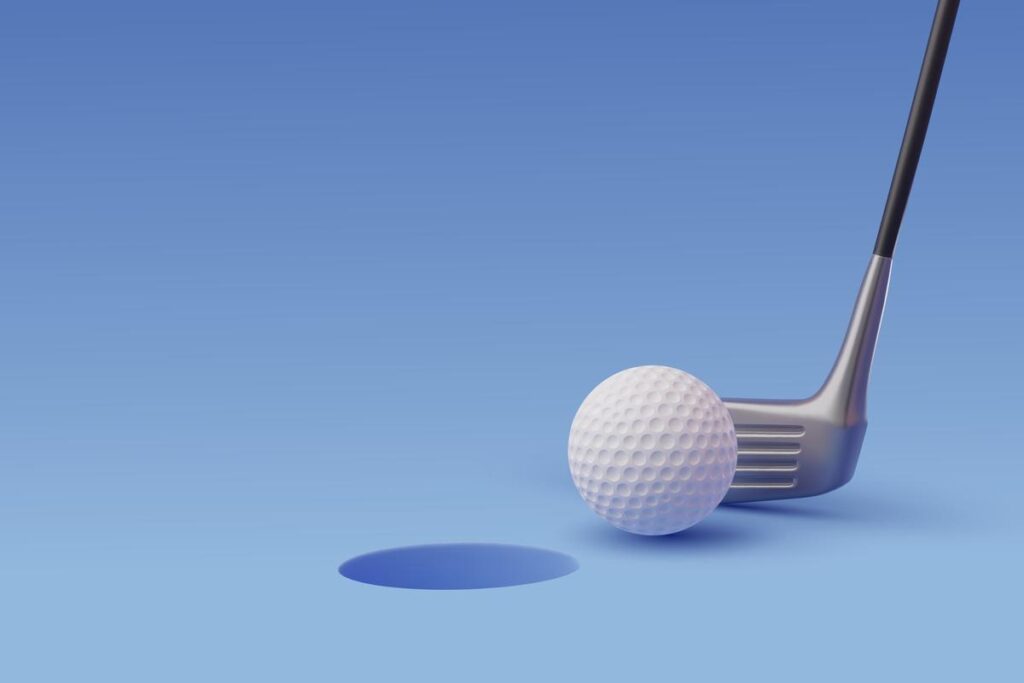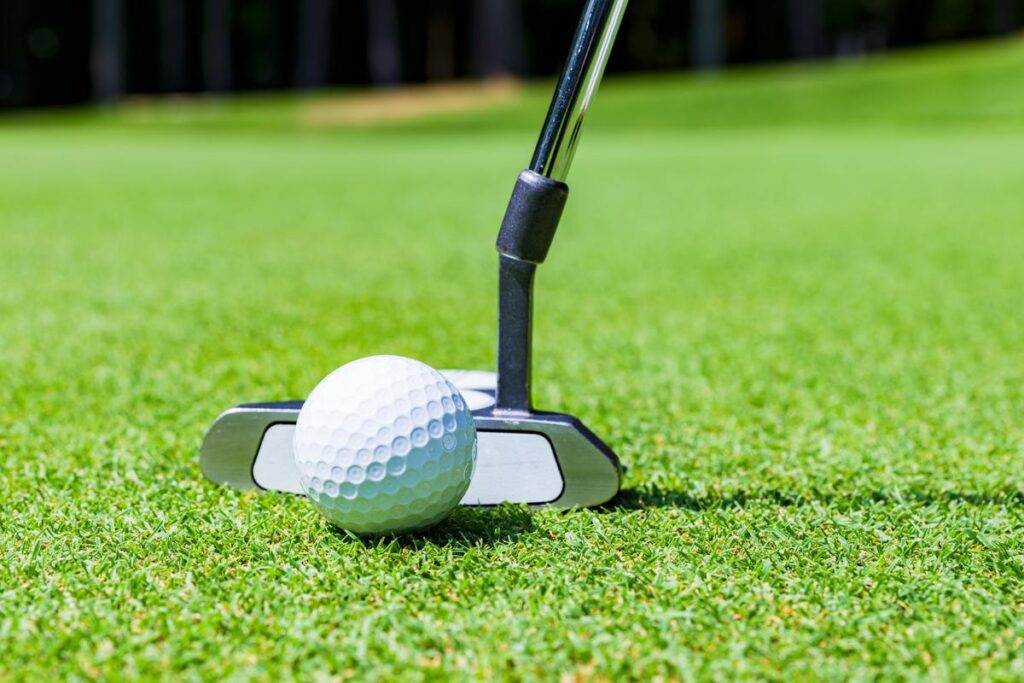TSA Regulations on Golf Equipment
I love golf. Whenever I get the time for a quick game, you’ll undoubtedly find me on the course. Sometimes I get to travel for work or leisure, and of course, bring my golf putter along. After all, what better way to unwind after an exhausting conference or touristic outing? However, as many of us know, airlines have baggage restrictions and guidelines. As such, you might be wondering, can I take my golf putter on a plane?
TSA Guidelines on Sporting Equipment
I tried to find this out myself one day before my travel and found the TSA’s sporting goods guidelines. Imagine my relief upon discovering that the Transportation Security Administration (TSA) does allow golf putters!
Nevertheless there’s a catch; All sport equipment must go into checked baggage. The TSA doesn’t allow large sports equipment in carry-on bags due to safety reasons. Meaning, I can’t just throw my golf putter into my hand luggage and head out of the door.
Golf Clubs and TSA Restrictions
Given that golf clubs can be used as blunt-force weapons, they’ve been classified as potential threats on airplanes by TSA rules. This honestly was a hard hit on me. It might mean that I have to check-in an additional bag. Or worse yet, pay some extra fees for oversized luggage if my club set exceeds airline restrictions.
Don’t worry though; every cloud has a silver lining! While it’s just a little inconvenient, carrying our golf equipment in our checked baggage guarantees everyone’s safety onboard.
I also discovered that individual airlines may have their own rules and regulations too. So it’s really critical to double-check these details with your specific airline before packing your putter.
Taking the time to understand these regulations beforehand saves you trouble while navigating through security checks. No more surprise fees or leaving your beloved golf putter behind at the airport! I take comfort in the fact that removing these slight uncertainties can make all the difference to a smoother travel journey. Safe journeys, fellow golf enthusiasts!
Carry-On or Checked Baggage?

Travelling with golf gear can present a unique set of challenges, particularly when it comes to flying. Your loved golf putter, in particular, might be a cause of concern. You might be wondering, can I carry my golf putter onto the plane?
The good news is that you’re not alone in this conundrum. As someone who’s had to navigate the often-confusing regulations of airlines, I understand the worry of potentially parting with your prized golf putter during your flight.
Determining Whether to Carry-On or Check your Golf Putter
If you’re considering whether to pack your putter in your carry-on or checked baggage, your session at the golf course is not the only thing to keep in mind. Factors such as the size of your bag, weight restrictions on flight, and the airline’s specific rules play a huge part.
Usually, airlines are alright with golf equipment as long as it fits within their size and weight restrictions and is packed in a way that prevents damage. But most times, due to their length, putters don’t make the cut for carry-on baggage.
In this case, you’d have to check in your golf putter with the rest of your luggage. And here’s a tip: Pack your putter securely inside a hard-shelled travel bag specifically designed for golf clubs. This way it stays protected throughout transit.
Size and Weight Restrictions for Carry-On and Checked Bags
Different airlines have different policies when it comes to size and weight restrictions. For instance, most airlines have a length restriction between 62 inches (length + width + height) for checked baggage and 46 inches for carry-on luggage.
As for the weight restriction, it varies between airlines, but generally, checked baggage can be up to 50 pounds, and carry-on luggage restricts to 15 to 20 pounds.
Again, be sure to check your airline’s specific baggage policy when planning on traveling with a golf putter. After all, who said a golf vacation should cause more stress than a bogey on the final hole?
Different Airline Policies
Deciding to take a golf putter on a plane certainly provokes interesting stares from other passengers. However, the real issue is whether the airlines will allow you to do so. With every company conducting its operations differently, it pays to familiarize yourself with airline policies concerning golf equipment.
Major Airlines’ Policies on Golf Equipment
Several airlines have varying policies on the transport of golf equipment. For instance, American Airlines permits one bag that may contain clubs, balls, shoes, and an umbrella as a single item of checked luggage. They caution, however, that oversize or overweight charges may apply.
On the other hand, airlines like Delta categorize golfing gear as special items, which are subject to different fees and regulations than regular baggage. I advise you to check with your specific carrier for detailed guidelines and limitations.
Specific Rules and Regulations for Golf Putters
When it comes to golf putters specifically, ringing up customer service or checking out airline websites won’t hurt since rules can vary greatly among carriers. For example, some airlines allow transporting putters under cabin luggage if properly enclosed in a case fitting within the specified size requirements.
However, the Transportation Security Administration (TSA) in the United States states plainly that golf clubs (including putters) are allowed in checked baggage but not carry-on luggage due to their potential use as a weapon.
Finally, make sure you cushion your valued clubs appropriately and secure all zippers and pockets on your golf bags before checking them in for flights. Investing in a durable travel case with padding might be worthwhile to protect expensive golf clubs from damage.
So, can you take a golf putter on a plane? Sure! But you need to make sure it’s packed safely in your checked luggage, and you’ve confirmed the airline’s specific policy.
Tips for Traveling with a Golf Putter

As a passionate golfer, I can tell you without a moment’s hesitation that golf clubs are akin to sacred artefacts for us golfers, and putters are perhaps the most revered amongst them. Like many, you might wonder, can I bring my golf putter with me onto a plane when traveling? Well, the answer is “yes”, but there are some important considerations you need to know.
Proper Packaging and Protection
Firstly, it’s absolutely crucial to package your golf putter properly before travel. Unlike your robust driver or irons that could withstand quite a bit of jostle, your putter, with its finely crafted curves, needs special treatment. I personally recommend using a golf travel bag or hard case designed specifically for clubs. These are padded, durable, and secure to protect your prized club from any damage during transit.
But remember, even with the best bag or case, never wrap your precious putter in bubble wrap alone and toss it into checked luggage without further protection. Send it straight down the path to possible denting and scratching? Absolutely not!
Checking with the Airline Prior to Travel
Another crucial step is checking with your airline before jetting off with your golf putter. While the Transport Security Administration guidelines generally allow golf clubs as checked items, individual airlines may have restrictions or additional fees.
Trust me; it’s better to be safe than sorry! It is frustrating when you are ready to fly off to your golf get-away only to find out at check-in that carrying along your treasured putter will cost you an unexpected fee, or worse, it’s not allowed at all.
Learning the specifics about your chosen airline’s golf equipment policy can save you a lot of hassle, trust me. Bottom line? Yes, you can bring along your favorite golf putter for air travel, but safeguard it properly and do your homework about the airline’s rules in advance.
Happy fairway-hopping!
Golf Putter Case Options
If you’re anything like me, you know that golf holidays are some of the best. There’s nothing quite like catching a flight to a sunny destination, knowing that you’ll have the chance to play some fantastic courses in drop-dead-gorgeous locales. The only challenge is figuring out how to handle our beloved golf clubs, especially when it comes to our trusty putters. It raises an interesting question, can I take my golf putter on a plane?
Well, technically speaking, yes! You can pack golf clubs in your checked baggage, but I’d highly advise protecting your putter with a secure case.
Types of Putter Cases Available
Soft Cases: Lightweight and flexible, soft cases provide basic protection. These cases may lack the extra padding necessary to protect your putter during rough handling.
Hard Cases: These provide top-tier protection, ensuring that your golf putter is safe from any external pressure.
Hybrid Cases: As the name suggests, these are a mix of hard and soft case properties. Hybrid cases provide adequate protection while being easier to handle and store than full hard cases.
Features to Look for in a Putter Case
Foam Padding Inside: Foam padding is essential for absorbing shock during transit. It safeguards your golf putter from scratches or damage due to pressure.
Durability: Look for high-quality materials that can withstand the test of time (and travel!). Water-resistant or waterproof features are a bonus.
Lockable Zippers: For added security, opt for cases that offer lockable zippers or combination locks.
Adequate Space: Choose a case that accommodates your golf putter well while also providing room for other essentials like balls, tees, and gloves.
No matter where you’re headed or what kind of golfer you are, your putter likely holds a special place in your heart. It’s wise to invest in a case that will keep it protected throughout all your future adventures.
International Travel Considerations

If you’re like me and traveling without your favorite golf putter sounds like a nightmare, then this is for you! When it comes to traversing the globe with your sports equipment, it’s always best to plan ahead. Several guidelines and regulations control the transportation of golf gear on airplanes, and these are affected by each country’s rules.
Restrictions and Guidelines for Golf Putters in Different Countries
Carrying your golf putter on international flights is not as simple as much as we’d wish it to be. Different airlines and countries have various restrictions regarding what you can bring onboard. Generally, most airlines permit golf equipment as checked luggage but not carry-ons due to their length and potential use as a weapon.
When planning your trip, checking the specific restrictions of both your airline and destination country is vital. For example, Singapore Airlines allows golf equipment as part of the regular baggage allowance, while Ryanair might require an additional sports equipment fee. Remember to pack your equipment properly; most airlines prefer a hard-shell case to protect against damage during flight.
Customs Regulations and Declarations
Customs are another crucial aspect of traveling with sports equipment such as a golf putter. When entering a foreign country, you might need to declare your gear at customs.
Customs regulations vary significantly between countries; some countries might require payment of duties or taxes on sporting goods, even if they’re for personal use. Always verify ahead of time to avoid unexpected surprises upon arrival.
Lastly, getting travel insurance is always a smart move when transporting valuable sports equipment abroad. It helps cover possible damages or loss during the flight, providing an extra layer of protection for your beloved gear.
On that note, remember that good planning ensures your travels run smoothly so that you can focus on your game. Hit those international greens with confidence, knowing that you’ve covered all your bases when bringing your golf putter on a plane!
Here’s a quick reference table on international travel with golf putters:
| Aspect | Key Considerations |
|---|---|
| Airline Policies | – Most airlines allow golf putters as checked-in luggage. – Some airlines may charge additional sports equipment fees. |
| Customs | – You might need to declare your gear at customs. – Some countries might require duties or taxes on sporting goods. |
| Travel Insurance | – Can help cover damage or loss of equipment during the flight. |
Personal Experiences and Recommendations
As someone who is passionate about golf, I can totally relate when you have a beloved golf putter that you can’t bear to part with, even for a short journey. The question on whether you can take your favorite golf putter on a plane may long have lingered in your mind. Having traveled extensively and being an avid golfer, I have had my fair share of experiences around this.
While some airlines might allow you to carry the golf putter onboard, others may strictly enforce that you check them in. It mainly comes down to the specific airline’s policies on sporting equipment as carry-on luggage. I would recommend always checking with your airline ahead of time, so there are no surprises at the boarding gate.
Travelers’ Stories and Tips for Carrying Golf Putters on Planes
When it comes to travelers’ stories, there’s quite a variation. Some fellow golfers have managed to get their specialist putters packed away safely in their carry-on without issue. In contrast, others found themselves having to scramble at the last minute to check them into the luggage hold.
One practical tip that has worked for me is using a specialized travel bag designed for golf clubs. This ensures that my putter is well-protected if it ends up being necessary to check it in. A pro-grade travel bag comes with padded tops for clubheads and is made from high-impact material which can withstand rough handling.
Among other measures, I’ve also found detaching the head of the putter from its shaft (if possible) useful when planning to carry it onboard. This makes it less intimidating and could fit easily within your carry on limits.
It’s also worth noting that TSA rules permit golf clubs as checked baggage, but they’re not allowed as carry-ons. More importantly, remember that security officers at the individual airports have the final decision about what’s okay to carry onboard. So always check before you travel!
My final words of advice? When in doubt, pack it in your checked luggage. Damage from transportation mishaps can be far less heartbreaking than losing out on bringing your favorite putter on your journey. Happy swinging!
Conclusion
I often have to travel for golf tournaments or casual games with friends across the country. I suppose if you’re reading this, you might be in a similar situation where you’re wondering about the rules of taking a golf putter with you on a plane.
You and I both know that being separated from your trusty golf putter can feel like losing a friend, and sometimes it can even impact your game. So, is it possible to bring your golf putter with you as part of your cabin luggage during air travel? After thorough research, I found out – Yes, you can! But there are guidelines to follow.
Summary of Key Points
Firstly, the golf putter needs to fit into your travel bags which meet the airline’s restrictions on carry-on size. The carry-on size restrictions often vary slightly from one airline to another. Therefore, you would be wise to check the restrictions from the specific airline.
Secondly, due to security measures some airlines do not allow golf putters in carry-on luggage and hence they have to be checked in.
Remember, your golf putters should be carefully protected inside the bag because nobody wants their favorite gear damaged.
Final Thoughts on Taking a Golf Putter on a Plane
Flying with a golf putter involves a bit of homework but saving our game is worth it every time. When planning your trip, always check with your airline for specific information regarding carry-on or check-in options for your golf putter.
I hope this piece of information helps all the avid golfers out there who might be as concerned as I was about traveling with their favorite piece on the course – their trusty putter. Safe travels and may your game always be up to par!
Just to sum up the key points:
| Key Points | Explanation |
|---|---|
| Checking Airline Regulations | Check with each specific airline for their carry-on size restrictions and rules about carrying golf equipment |
| Packing Golf Putter Carefully | Make sure to protect your clubs with a sturdy bag. This is important especially if you have to check them in. |

I’m Donna Weiss, and I am the proud writer behind the captivating content you’ll find on golfneedy.com. As an avid golfer and passionate writer, I have combined my two greatest passions to bring you an incredible golfing experience. Through my articles, I aim to provide you with valuable insights, equipment reviews, and updates on the latest tournaments. Whether you’re a seasoned golfer or just starting out on this exciting journey, I am here to guide you and share my expertise. Together, let’s explore the fascinating world of golf, uncovering new techniques, and enhancing our skills. Join me on this thrilling adventure as we elevate our game and embark on an exciting golfing journey. Read More




You come up with some great points within this article, but are you forgetting something fundamental?